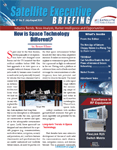America’s Telecommunications Forum Highlights Innovations in Satellite Communications, the Importance of Harmonized Spectrum
Guadalajara, Mexico, July 19, 2018 – More than 200 participants from the 35 OAS states, including government spectrum regulators and representatives from the private sector attending the CITEL PCCII meeting in Guadalajara, Mexico, 16 – 20 July, were provided the opportunity to learn the latest in satellite technology and applications, and the key services they deliver to consumers around the world.
Under the theme "Satellite Communications: Bringing 5G and Advanced Technologies to Everyone, Wherever they are Located," the seminar was opened by Oscar Leon, Executive Secretary of CITEL.
“It is clear that the evolution of satellite technology has the potential to complement, compete and provide alternative solutions to achieve the goals of connectivity in the Americas region," he said. "New satellite technologies, constellations, applications and services have become a core component in 5G expansion across the Americas. The challenge of spectrum scarcity is real, and regulators have the interest to assure continued satellite spectrum availability to develop their national broadband plans and facilitate the provision of such services for both, served and underserved communities.”
The Seminar keynote, Erwin Hudson, Vice President Telesat LEO at Telesat, spoke to the innovations in satellite technology and architecture, including the new focus on non-geostationary constellations like the Telesat LEO Constellation. “Broadband is about connecting one person to everything,” Hudson said, “and non-geostationary constellations are well-positioned to achieve this.”
Panel sessions chaired by David Hartshorn, CEO Geeks without Frontiers, and Jennifer A. Manner, SVP Regulatory Affairs at EchoStar/Hughes provided lively debate on new satellite technologies applications and services, and topics on the agenda of the next World Radiocommunication Conference (WRC-19) that will significantly influence the availability of critical spectrum needed to support the satellite services revolutions. "The dialogue held during this week's CITEL meeting sent a clear signal," Hartshorn said.
Administrations in the Americas have begun adapting their national broadband strategies to leverage low-cost satellite connectivity innovations. "Governments throughout the region increasingly recognize that they have an unprecedented opportunity to achieve vital public policy objectives -- from improved standards of health and education to disaster preparedness and universal service. Assuring satellite-industry access to spectrum must be a central feature of those strategies," Hartshorn added.
“The panel showed the vast innovation occurring in the industry to enable the deployment of advanced services, such as 5G and IoT, across the region and globe. It is clear that access to spectrum in the millimeter wave bands and regulatory flexibility is critical to ensuring that these services are available to help close the digital divide.” Manner said.






